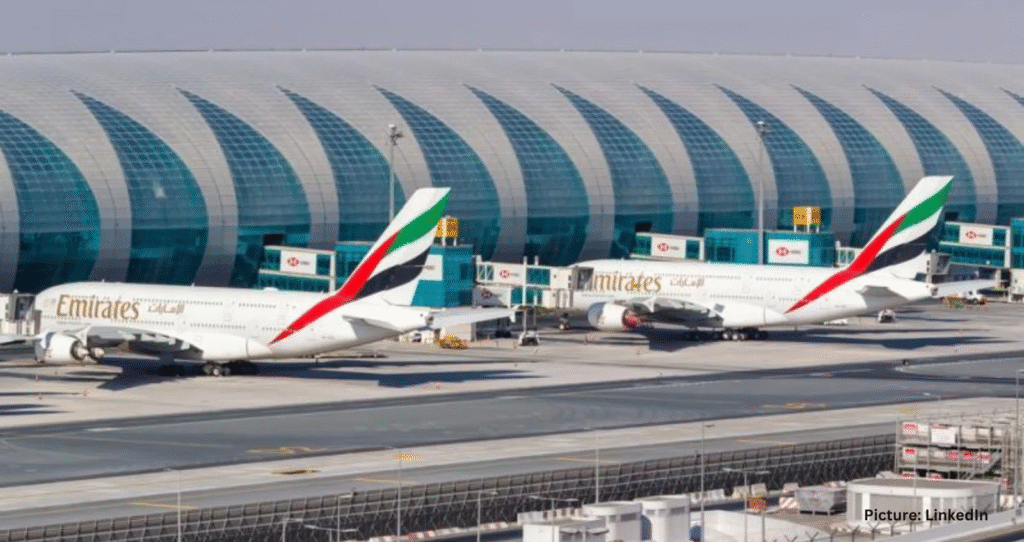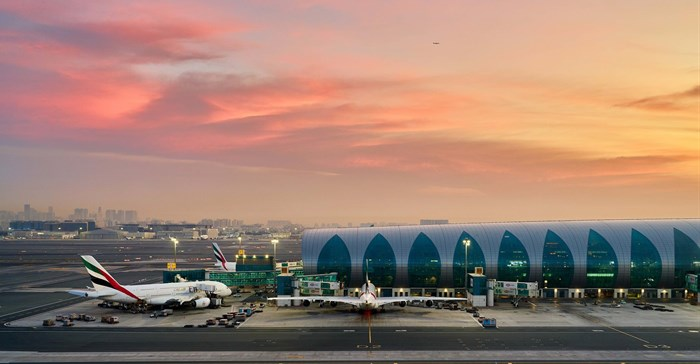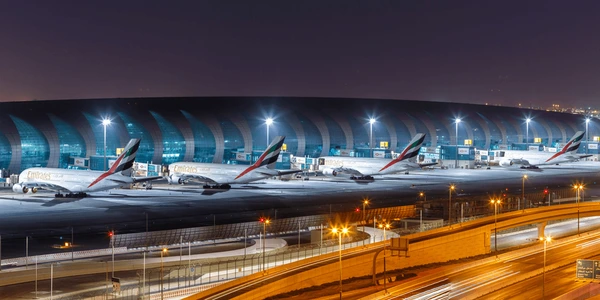Now Reading: Dubai’s Airport Revolution: How Mega Projects Are Changing Travel 2025
-
01
Dubai’s Airport Revolution: How Mega Projects Are Changing Travel 2025
Dubai’s Airport Revolution: How Mega Projects Are Changing Travel 2025

Table of Contents
Dubai is once again making headlines with its ambitious infrastructure projects. Known for breaking records and pushing boundaries, the city is now focusing on transforming its airport infrastructure to support future growth. This airport-led boom is reshaping the travel and trade landscape, not just in the UAE but across the world.
Experts say Dubai’s airport expansion is essential for the country’s vision to become a leading global hub. Let’s take a closer look at how these projects are changing Dubai’s skyline and what it means for travelers, businesses, and the economy.
Dubai International Airport: Staying Number One

Dubai International Airport (DXB) is already the world’s busiest airport for international passengers. In 2024, it served over 87 million travelers, and the numbers are still rising in 2025. To keep up with this incredible growth, Dubai Airports has launched a series of upgrades.
Major plans include expanding Terminal 1 and renovating Terminal 3. These upgrades will add more gates, better passenger facilities, and faster baggage systems. The airport is also investing in advanced technology like AI-based security screening to make travel smoother and safer.
Paul Griffiths, CEO of Dubai Airports, recently said, “We want to make sure every passenger gets a world-class experience, from check-in to boarding.” With more people flying through DXB every year, these improvements are not just nice to have — they are essential.
Al Maktoum International Airport: The Mega Airport of the Future
If Dubai International is the present, Al Maktoum International Airport (DWC) is the future. Located in Dubai South, this airport is set to become the world’s largest once fully completed.
The new expansion phase will boost its capacity to handle 120 million passengers annually by 2030, and eventually up to 260 million — a figure unmatched anywhere else on earth. The $35 billion investment will add five parallel runways, massive terminals, and futuristic smart systems to handle passengers and cargo with speed and efficiency.
Freight is also a big focus for DWC. As global e-commerce booms, the airport aims to become a key cargo hub with state-of-the-art logistics and warehousing solutions. Already, major logistics companies like DHL and FedEx have built facilities at DWC, attracted by its huge space and modern design.
Dubai South: A New Smart City Around the Airport
Al Maktoum Airport is the heart of a bigger vision: Dubai South. This master-planned smart city is designed around the airport, with dedicated zones for residential, commercial, logistics, and aviation industries.
Dubai South is strategically located close to the Jebel Ali Port, creating one of the world’s largest sea-air logistics corridors. This is a game-changer for businesses that rely on quick import and export operations.
Officials expect Dubai South to eventually accommodate over one million people, making it a thriving community with schools, hospitals, and shopping centers. The airport is, quite literally, powering the birth of a new city.
Sustainability and Smart Technologies

Dubai’s airport boom is not just about size. It is also about sustainability and smart solutions. Dubai Airports is working on reducing its carbon footprint through energy-efficient systems, electric ground vehicles, and solar power.
At Al Maktoum International, planners are incorporating green building standards and investing in advanced waste recycling systems. Even aircraft taxiing operations are being redesigned to save fuel and reduce emissions.
Smart technologies are also playing a huge role. From biometric boarding gates to AI-powered traffic management, Dubai’s airports are showcasing what the future of travel could look like. These innovations aim to handle the growing crowds while maintaining high safety and service standards.
Economic Impact: A Boost for the UAE
All these investments are not just about prestige — they bring real economic benefits. The aviation sector already contributes more than 27% of Dubai’s GDP, supporting over 750,000 jobs. With airport expansion, this number is expected to grow even higher.
New construction projects create thousands of jobs, both directly and indirectly. Hotels, restaurants, transport services, and small businesses also benefit from the increasing flow of travelers. Dubai’s real estate sector is seeing growth as well, thanks to areas like Dubai South attracting residents and investors.
According to the Dubai Civil Aviation Authority, the airport expansions could add an extra AED 200 billion to the local economy over the next decade. This shows how important airports are to Dubai’s long-term success story.
Challenges Ahead

Of course, such massive projects come with challenges. Global supply chain delays, skilled labor shortages, and rising costs could affect timelines. However, Dubai has a track record of overcoming these issues with strong planning and public-private partnerships.
Experts believe that continued investment and a clear vision will keep Dubai ahead in the aviation race. As competition grows from other global hubs, Dubai is determined to keep its edge.
The Future of Travel
In many ways, Dubai’s airport-led infrastructure boom is a preview of the future of global travel. Seamless passenger experiences, mega-terminals, smart technology, and a commitment to sustainability are setting new standards.
As Dubai’s projects move forward, travelers can expect smoother journeys, faster connections, and world-class facilities. For businesses, the growth means more opportunities in logistics, tourism, and investment.
Dubai has always dreamed big — and with these airport megaprojects, it is turning those dreams into reality once again.
Read More:- Deyaar’s Latest Announcement Shakes Up the UAE Property Market



















